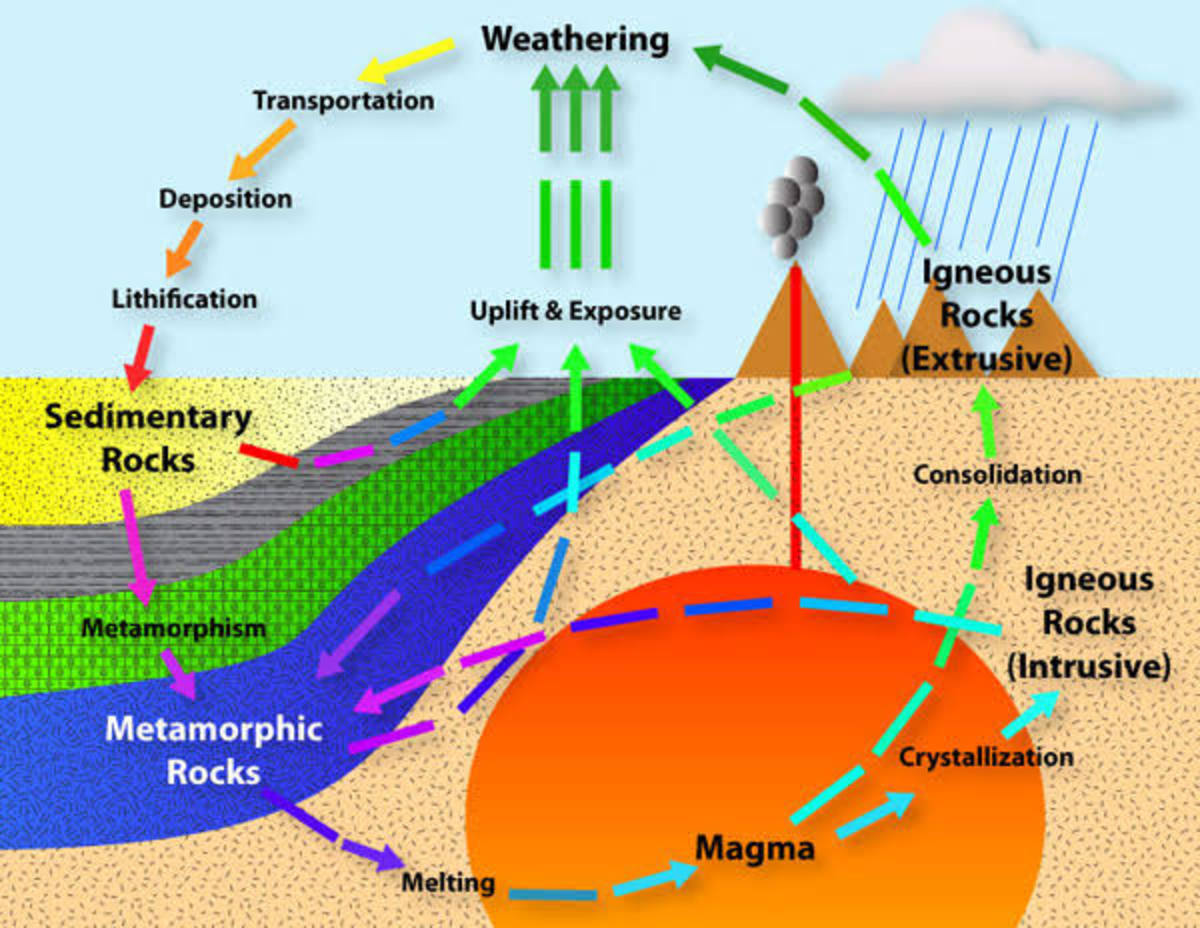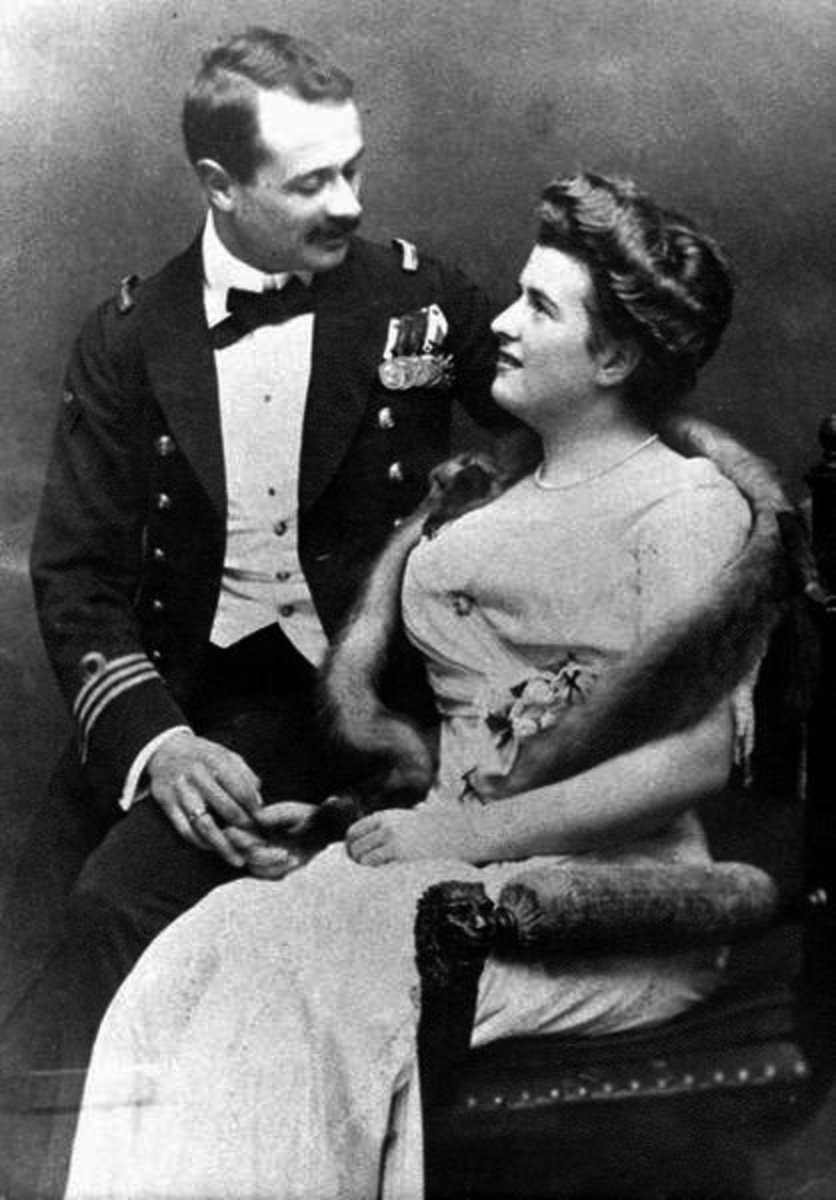NASA Experimental Aircraft Projects
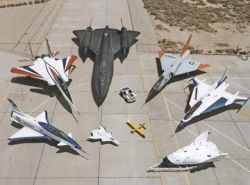
List of experimental aircraft
Throughout its history NASA has used several different types of aircraft on a permanent, semi-permanent, or short-term basis. These aircraft are usually surplus, but in a few cases are newly-built, military aircraft. Most aircraft are marked as experimental when they are first designed, whether or not they are later produced. This list will focus on notable vehicles that never went into production and experimental variations of vehicles that were produced.
XB-70 Valkyrie
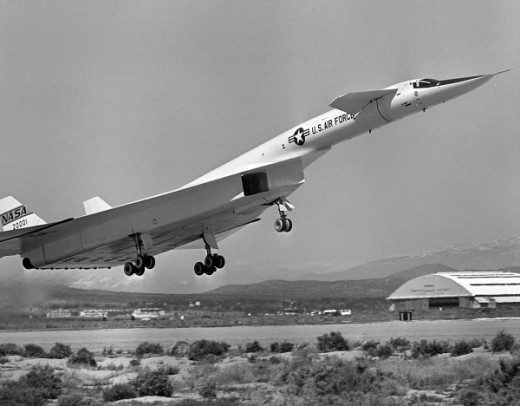
The XB-70 Valkyrie was a technological masterpiece of its time. With the help of the latest technology it could cruise at speeds of up to Mach 3 and heights of up to 77 000 ft (23 km). The XB-70 program began in 1955 when the United States Air Force (USAF) issued a request for a high-altitude, long-range bomber with a Mach 3 (three times the speed of sound) dash capability and the ability to carry a heavy nuclear and conventional warload. The new aircraft was to replace the subsonic B-52. This requirement came about when the Air Force realized bombers could have performance similar to that of fighters and therefore be much more effective. Technological breakthroughs in the 1950s and '60s made such high performance possible.
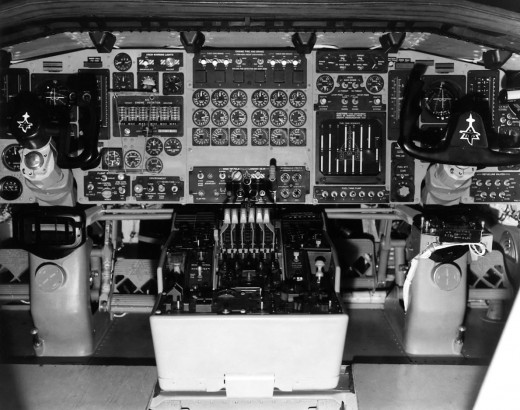
The XB-70 Flight Test Program was conducted from the maiden flight on 21 September 1964 through 6 August 1966. The Valkyrie first became supersonic (Mach 1.1) on the third test flight on 12 October 1964.
The 83rd and last XB-70 flight occurred on 4 February 1969, when the Valkyrie made a subsonic structural dynamics test and ferry flight. The aircraft took off from Edwards and flew to Wright-Patterson Air Force Base in Ohio, where it was put on display at the Air Force Museum. It resides there today.
The XB-70 dramatically advanced high-speed flight and was a fantastic aeronautical achievement, especially considering the period in which it was developed. Its effects can still be seen today in the MiG-25 and in the absence of a US SST, which was cancelled in 1971. The research data the XB-70 gathered helped kill the American version of the Concorde by showing how destructive and expensive sustained supersonic flight was.
In total, the first XB-70 made 83 flights equaling 160 hours and 16 minutes, while the second XB-70 logged 46 flights in its brief life, totaling 92 hours and 22 minutes. This fantastic aircraft will always be remembered in the history of aviation and its legacy can still be felt in the aviation industry today.
XB-70 Valkyrie Video
Grumman X-29
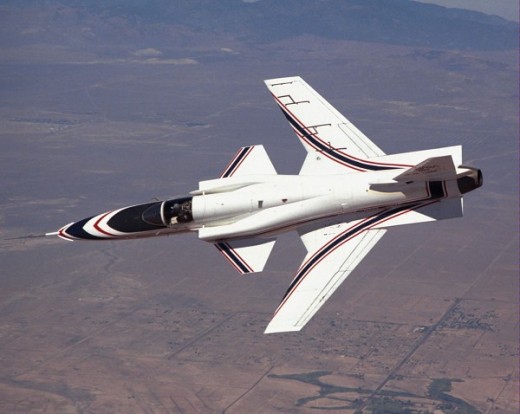
The Grumman X-29 was an experimental aircraft that tested a forward-swept wing, canard control surfaces, and other novel aircraft technologies. The aerodynamic instability of this arrangement increased agility but required the use of computerized fly-by-wire control. Composite materials were used to control the aeroelastic divergent twisting experienced by forward-swept wings, also reducing the weight. The X-29 first flew in 1984 and two X-29s were flight tested over the next decade.
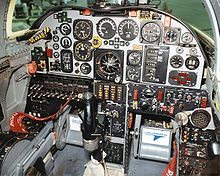
The first X-29 was taken aloft on 14 December 1984 from Edwards AFB with Grumman's Chief Test Pilot Chuck Sewell at the controls. On 13 December 1985, one of the X-29s became the first forward swept wing aircraft to fly in supersonic, level flight.
The X-29 began a NASA test program only four months after its first flight. The X-29 proved very reliable, and by August 1986 was involved in flying research missions lasting more than three hours. The first X-29 was not equipped with a spin recovery parachute, as it was not expected to go into a spin. The second X-29 was given such a parachute and was involved in a high angle-of-attack research program. The NASA test program continued from 1984 to 1991. By the time the first X-29 was retired in 1986, it had been flown 242 times.
North American X-15
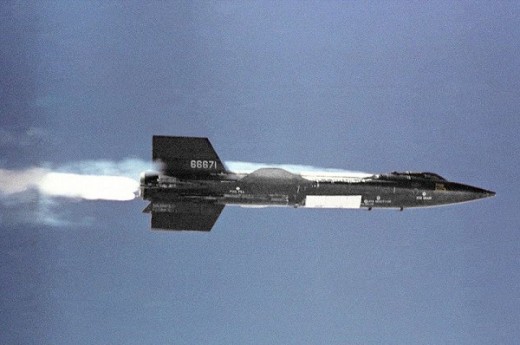
The North American X-15 rocket-powered aircraft/spaceplane was part of the X-series of experimental aircraft, initiated with the Bell X-1, that were made for the USAF, NASA, and the USN. The X-15 set speed and altitude records in the early 1960s, reaching the edge of outer space and returning with valuable data used in aircraft and spacecraft design. It currently holds the official world record for the fastest speed ever reached by a manned rocket powered aircraft.
During the X-15 program, 13 of the flights (by eight pilots) met the USAF spaceflight criteria by exceeding the altitude of 50 miles (80.47 km, 264,000 ft), thus qualifying the pilots for astronaut status. Of all the X-15 missions, two flights (by the same pilot) qualified as space flights per the international definition of a spaceflight by exceeding a 100 kilometer (62.137 mi, 328,084 ft) altitude.
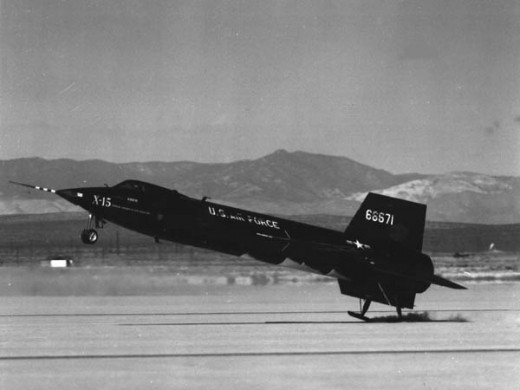
Three X-15s were built, flying 199 test flights, the last on 24 October 1968. The first X-15 flight was an unpowered test flight by Scott Crossfield, on 8 June 1959; he also piloted the first powered flight, on 17 September 1959, with his first XLR-99 flight on 15 November 1960. Twelve test pilots flew the X-15; among them were Neil Armstrong (first man to walk on the moon) and Joe Engle (a space shuttle commander).
In July and August 1963, pilot Joe Walker crossed the 100 km altitude mark, joining the NASA astronauts and Soviet Cosmonauts as the only humans to have crossed the barrier into outer space (Soviet Yuri Gagarin was the first person in space, reaching 327 km in apogee of his orbital flight, while Alan Shepard was the first American in space, reaching 187 km during suborbital flight) and becoming the first to exceed this threshold twice.
A 200th flight over Nevada was slated for 21 November 1968, piloted by William J. Knight. Technical problems and bad weather delayed the flight six times, and on 20 December 1968, the 200th flight was finally cancelled. The X-15 was unfastened from the wing of bomber NB-52A, and prepared for indefinite storage.
Boeing X-45
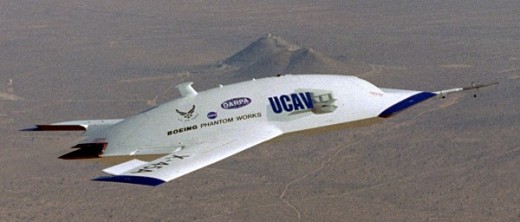
The Boeing X-45 unmanned combat air vehicle is a concept demonstrator for a next generation of completely autonomous military aircraft, developed by Boeing's Phantom Works.
Boeing built two of the model X-45A; both were scaled-down proof-of-concept aircraft. The first was completed by Boeing's Phantom Works in September 2000. The goal of the X-45A technology demonstrator program was to develop the technologies needed to "conduct suppression of enemy air defense missions with unmanned combat air vehicles." The first generation of unmanned combat air vehicles are primarily planned for air-to-ground roles with defensive air-to-air capabilities coupled with significant remote piloting. The larger X-45B design was modified to have even more fuel capacity and three times greater combat range, becoming the X-45C.
Removing the pilot and its associated facilities dramatically reduces the aircraft's cost. Operators may remotely command the aircraft, but the actual piloting is autonomous.
Boeing X-45 footage
Boeing X-48
Boeing X-48
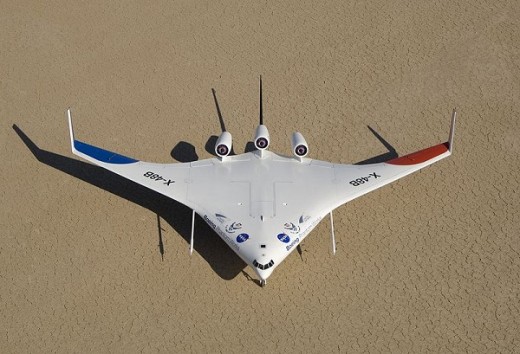
Boeing Phantom Works has partnered with NASA and the Air Force Research Laboratory to study the structural, aerodynamic and operational advantages of the Blended Wing Body concept, a cross between a conventional plane and a flying wing design. The Air Force has designated the prototype the X-48B based on its interest in the design's potential as a multi-role, long-range, high-capacity military transport aircraft. The 8.5 percent scale, remotely piloted X-48B is dynamically scaled to fly much like the full-size aircraft would fly.
Following completion of installation of test instrumentation, one of two X-48B Blended Wing Body technology demonstrators began flight tests at NASA's Dryden Flight Research Center in early 2007, and those tests are continuing into 2008. Researchers at NASA's Langley Research Center in Hampton, Va., tested the second X-48B prototype aircraft in Langley's historic full-scale wind tunnel in the spring of 2006, and the flight tests are intended in part to validate the results of those wind tunnel tests.
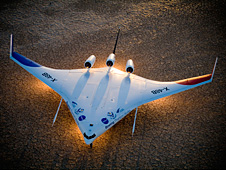
The two X-48B Blended Wing Body technology demonstration aircraft were built by Cranfield Aerospace. The subscale prototypes have a wingspan of 20.4 feet, with prominent vertical fins and rudders at the wingtips and elevons along the trailing edges of the wings. The 523-lb. gross weight aircraft are powered by three small model aircraft turbojet engines providing a maximum combined thrust of about 160 lbs. The X-48B has an estimated top airspeed of 118 knots (139 mph), a maximum altitude of about 10,000 feet and a flight duration of about 40 minutes.
Boeing X-48B first flight
Morphing Airplane
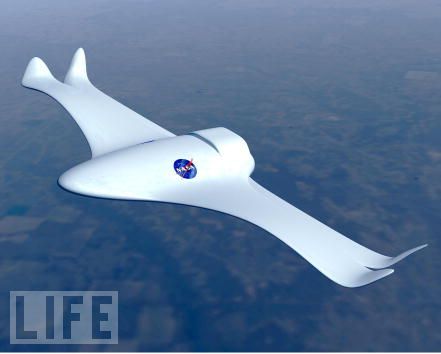
An artist's rendering of the 21st Century Aerospace Vehicle, sometimes nicknamed the Morphing Airplane, shows advanced concepts NASA envisions for an aircraft of the future.
An artist's rendering shows advanced concepts NASA envisions for an aircraft of the future. Called the 21st Century Aerospace Vehicle, and sometimes nicknamed the Morphing Airplane, the concept includes a variety of smart technologies that could enable inflight configuration changes for optimum flight characteristics.NASA X-43
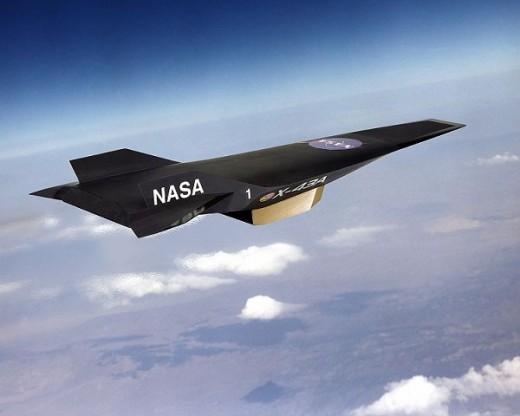
The X-43 is an unmanned experimental hypersonic aircraft with multiple planned scale variations meant to test various aspects of hypersonic flight. It was part of NASA's Hyper-X program. It has set several airspeed records for jet-propelled aircraft. A winged booster rocket with the X-43 itself at the tip, called a "stack", is launched from a carrier plane. After the booster rocket brings the stack to the target speed and altitude, it is discarded, and the X-43 flies free using its own engine, a scramjet.
The initial version, the X-43A, was designed to operate at speeds greater than Mach 7, about 8,050 km/h at altitudes of 30,000 m or more. The X-43A is a single-use vehicle and is designed to crash into the ocean without recovery. Three of them have been built: the first was destroyed; the other two have successfully flown, with the scramjet operating for approximately 10 seconds, followed by a 10 minute glide and intentional crash.
The third flight of the X-43A set a new speed record of 12,144 km/h (7,546 mph), or Mach 9.8, on November 16, 2004. It was boosted by a modified Pegasus rocket which was launched from a Boeing B-52 at 13,157 meters (43,166 ft). After a free flight where the scramjet operated for about ten seconds, the craft made a planned crash into the Pacific Ocean off the coast of southern California.










